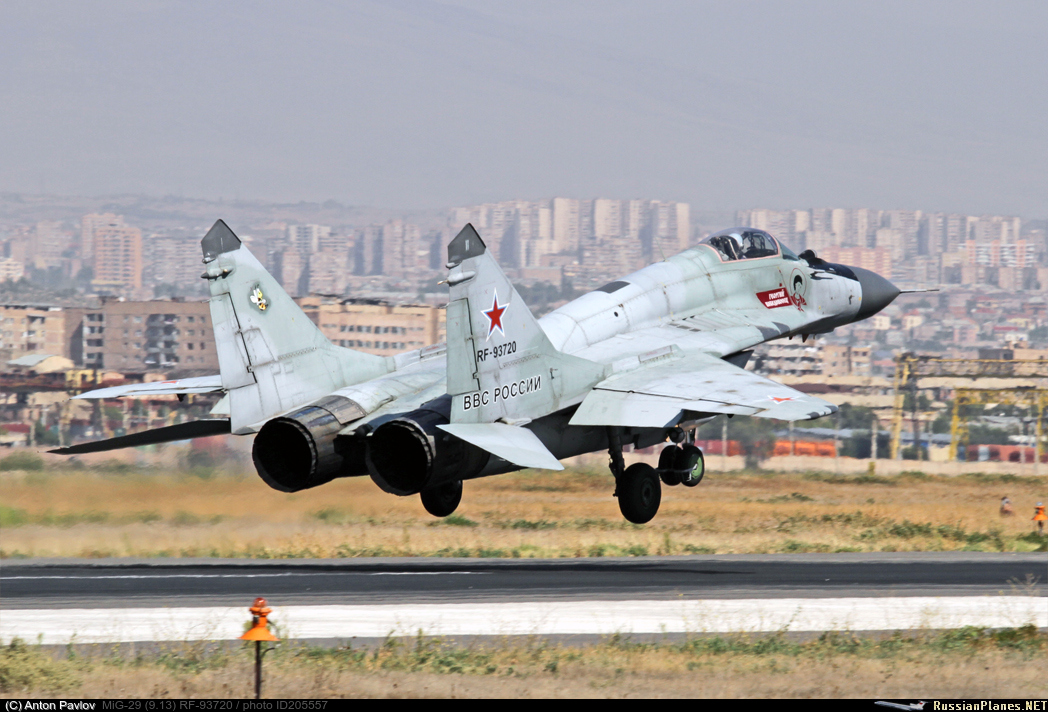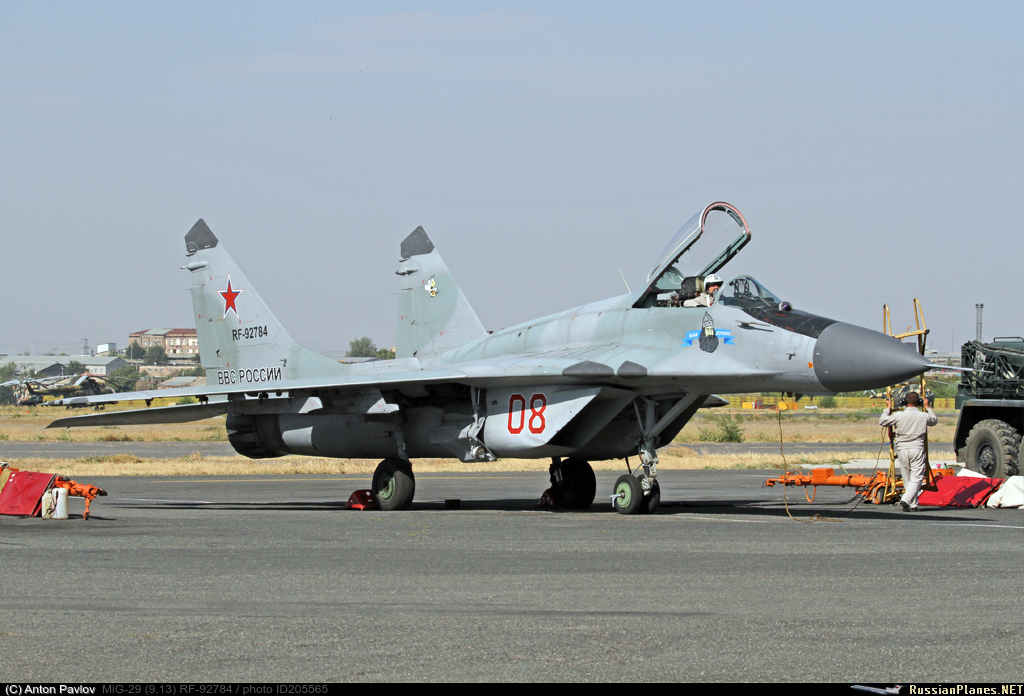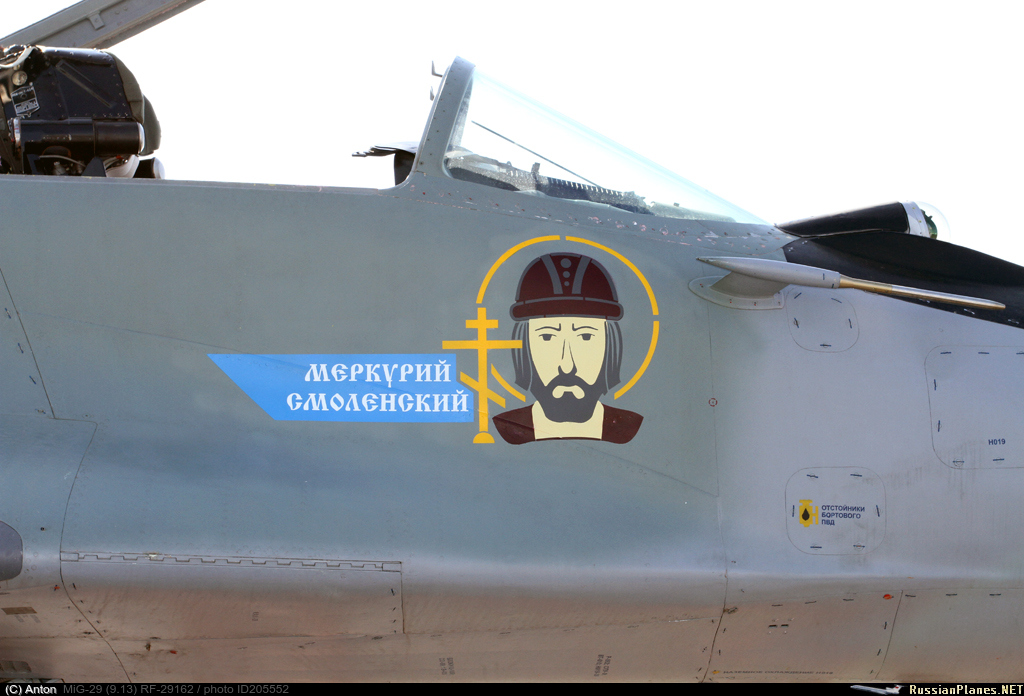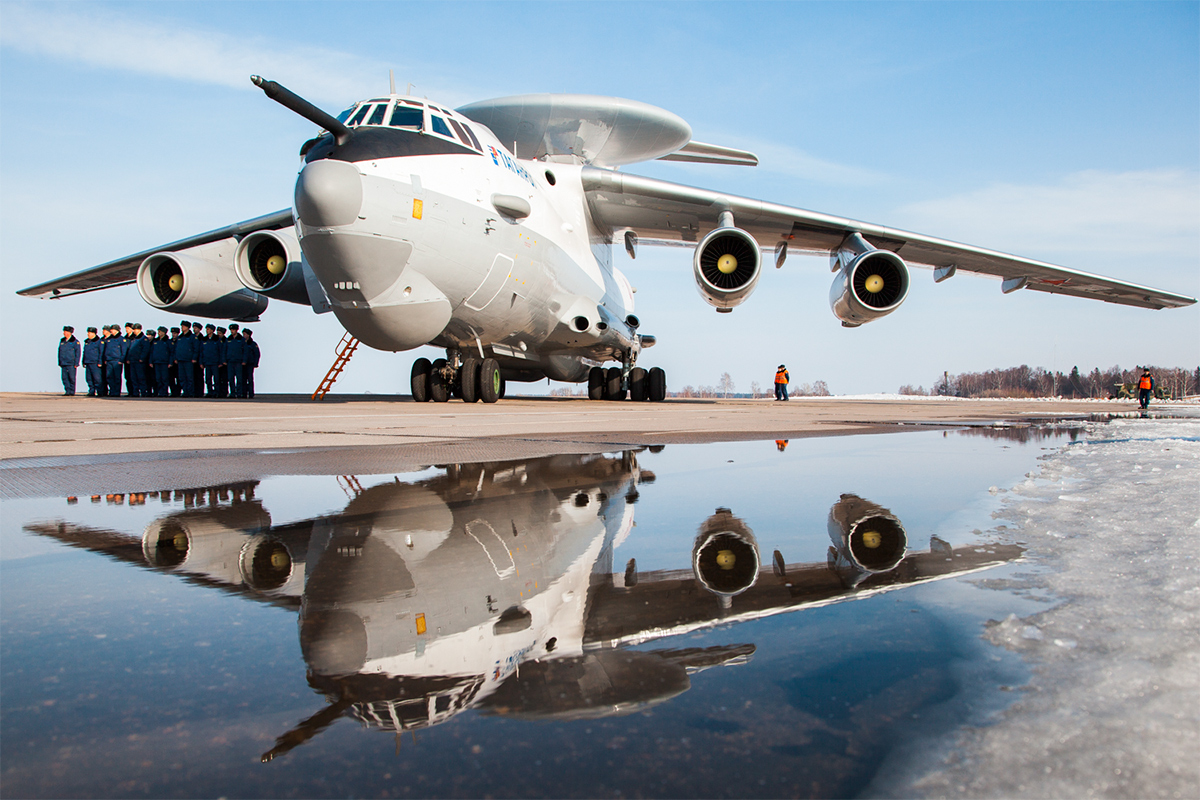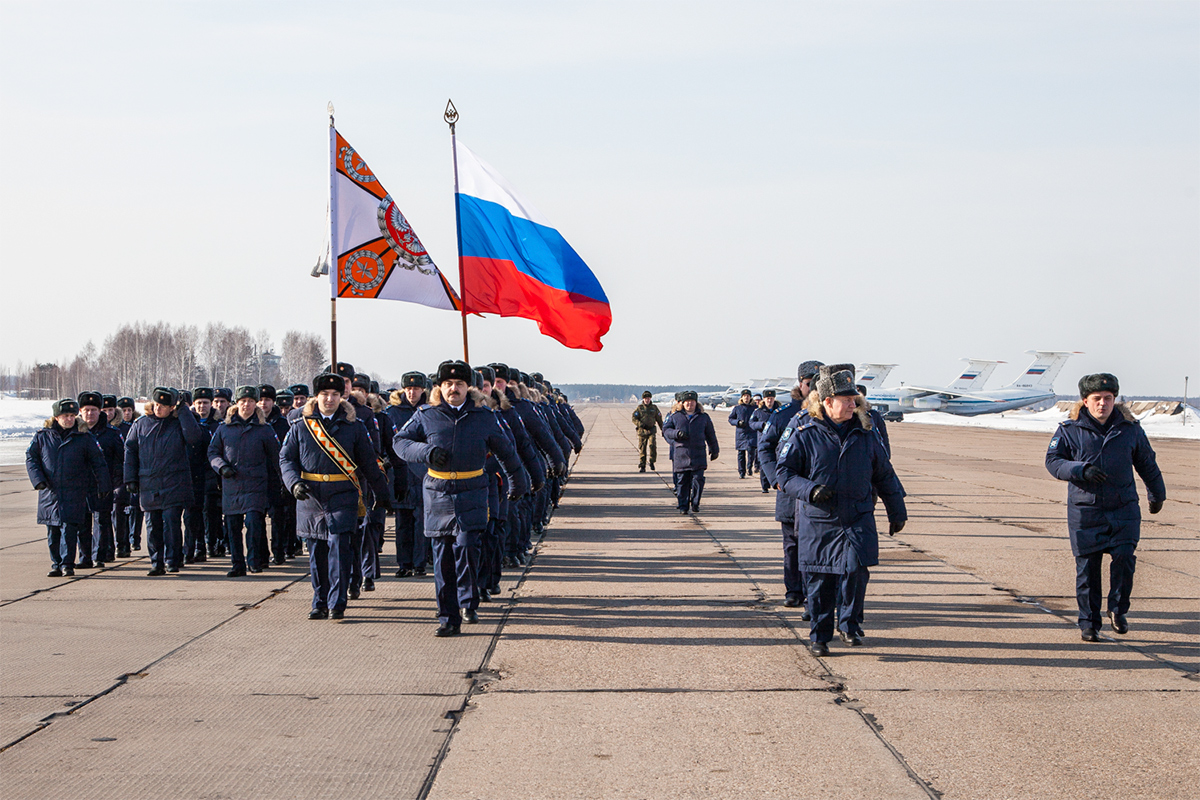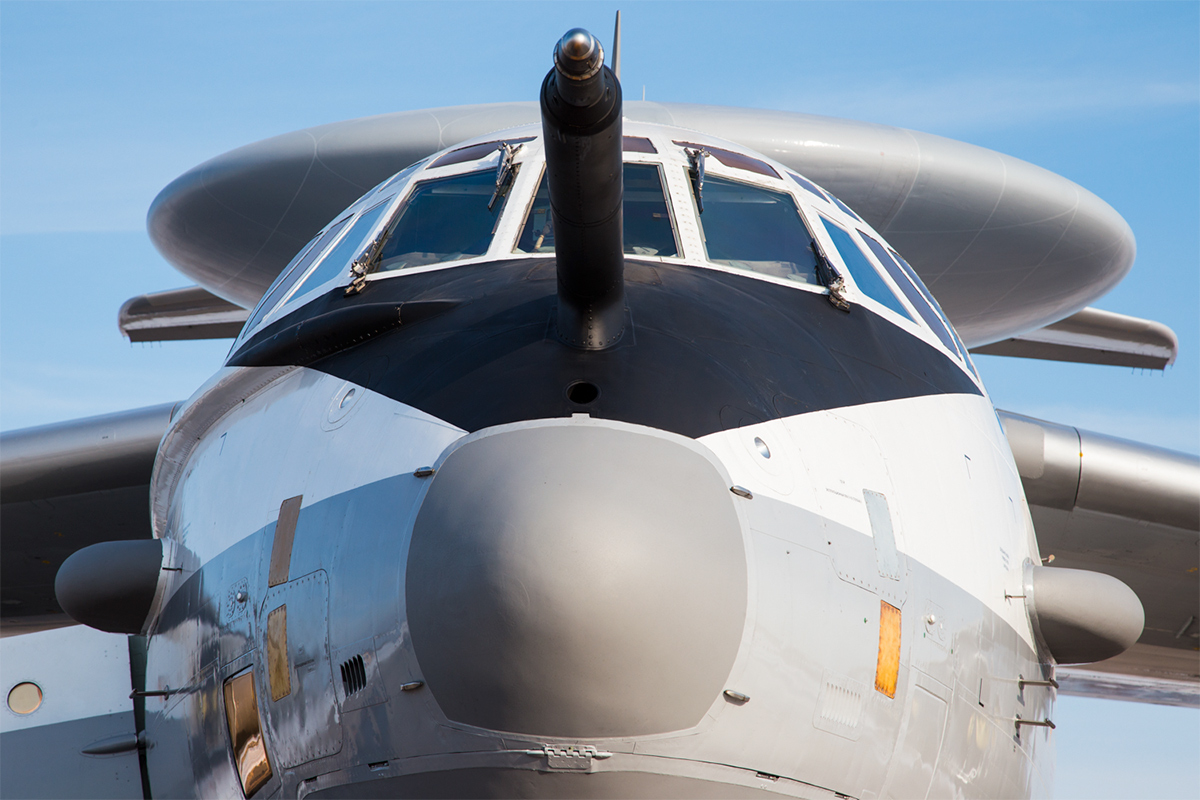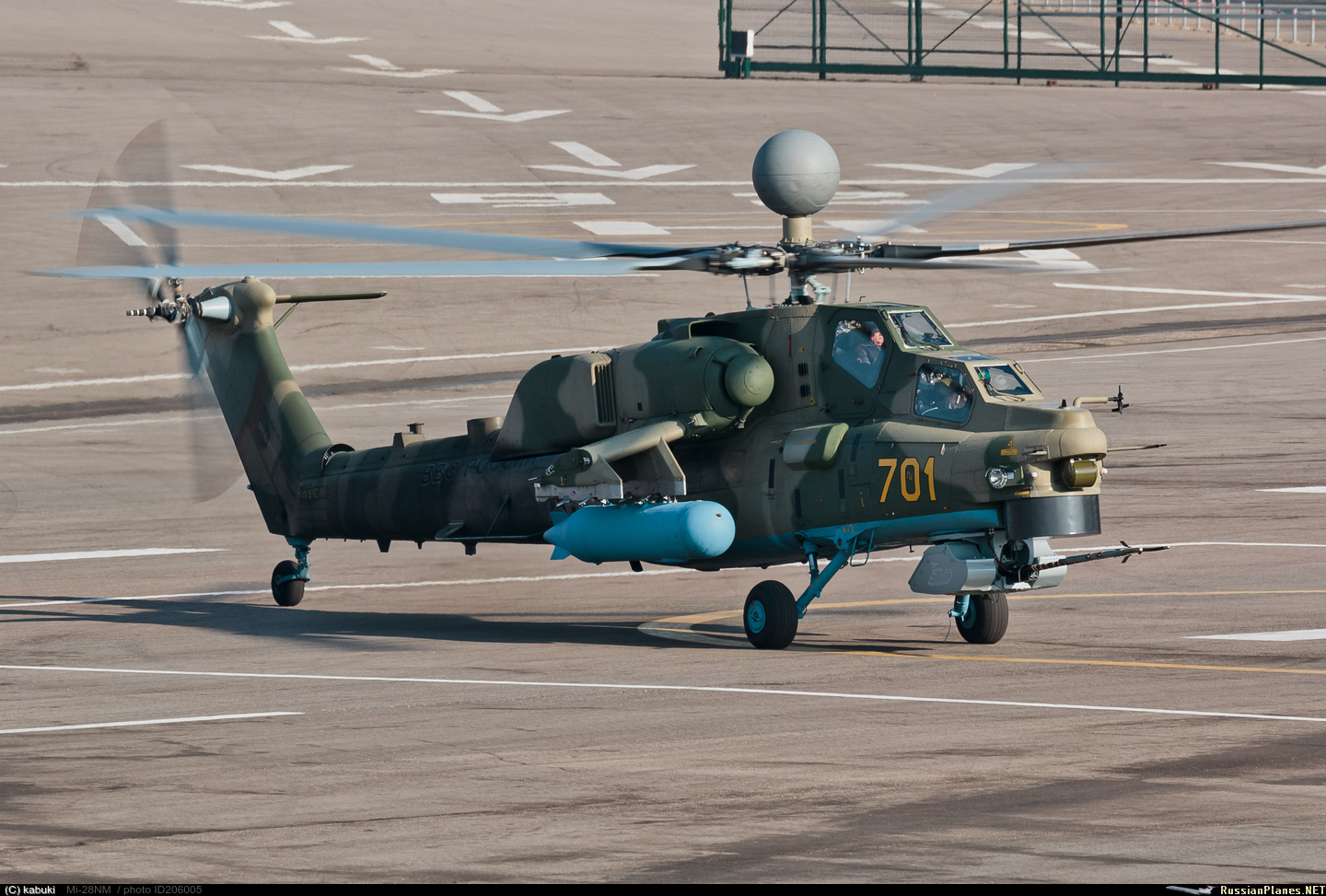How to install the app on iOS
Follow along with the video below to see how to install our site as a web app on your home screen.
Note: This feature may not be available in some browsers.
You are using an out of date browser. It may not display this or other websites correctly.
You should upgrade or use an alternative browser.
You should upgrade or use an alternative browser.
Russian Air Force. Photos & Videos & Discussion
- Thread starter Barmaley
- Start date
Hindustani78
BANNED

- Joined
- Apr 8, 2014
- Messages
- 40,471
- Reaction score
- -47
- Country
- Location
http://tass.com/defense/934556
KOMSOMOLSK-ON-AMUR, March 9. /TASS/. The Russian Defense Ministry this year will get a batch of ten highly maneuverable multirole fighters Sukhoi-35S and another Sukhoi-27 will be upgraded to the Sukhoi-35 level, First Deputy Defense Minister Yuri Borisov told the media on Thursday.
"Last year we concluded a long-term contract for building Sukhoi-35S planes. This year we expect ten newly-built Sukhoi-35S fighters and another four Sukhoi-27s upgraded to match the Sukhoi-35 capabilities," he said while visiting the Gagarin Aircraft-Building Plant in Komsomolsk-on-Amur.
Borisov spoke highly of the Sukhoi-35S parameters. "The pilots say the plane is great. It boasts unique flight and technical parameters. It was baptized by fire in Syria to have displayed excellent capabilities," Borisov said.
The Sukhoi-35S is Russia’s highly maneuverable multirole fighter of generation 4++, developed by the Sukhoi design bureau. The plant in Komsomolsk-on-Amur was commissioned to build 50 Sukhoi-35S jets for the Defense Ministry by 2020. Ten planes are to be delivered every year. Since 2009 the plant has provided 48 planes for the Russian Armed Forces.
KOMSOMOLSK-ON-AMUR, March 9. /TASS/. The Russian Defense Ministry this year will get a batch of ten highly maneuverable multirole fighters Sukhoi-35S and another Sukhoi-27 will be upgraded to the Sukhoi-35 level, First Deputy Defense Minister Yuri Borisov told the media on Thursday.
"Last year we concluded a long-term contract for building Sukhoi-35S planes. This year we expect ten newly-built Sukhoi-35S fighters and another four Sukhoi-27s upgraded to match the Sukhoi-35 capabilities," he said while visiting the Gagarin Aircraft-Building Plant in Komsomolsk-on-Amur.
Borisov spoke highly of the Sukhoi-35S parameters. "The pilots say the plane is great. It boasts unique flight and technical parameters. It was baptized by fire in Syria to have displayed excellent capabilities," Borisov said.
The Sukhoi-35S is Russia’s highly maneuverable multirole fighter of generation 4++, developed by the Sukhoi design bureau. The plant in Komsomolsk-on-Amur was commissioned to build 50 Sukhoi-35S jets for the Defense Ministry by 2020. Ten planes are to be delivered every year. Since 2009 the plant has provided 48 planes for the Russian Armed Forces.
Hindustani78
BANNED

- Joined
- Apr 8, 2014
- Messages
- 40,471
- Reaction score
- -47
- Country
- Location
https://sputniknews.com/military/201703101051431944-russia-gets-new-airforce-jets/
NOVOSIBIRSK (Sputnik) – Russia's Aerospace Forces will get 16 new Sukhoi Su-34 fighter-bombers in 2017, while the modernization of the aircraft will start in 2018, Russian Deputy Defense Minister Yuriy Borisov announced on Friday.
"This year, we expect additional deliveries of four aircraft and the total order volume for the current year is 16 Su-34s," Borisov said, adding that nine aircraft are already in the final stages of assembly.
According to the deputy defense minister, the Novosibirsk Aircraft Production Association (NAPO, or NAPA) has a long-term contract with the Russian Defense Ministry on the production of a total of 92 Su-34 strike fighters.
Borisov stressed that Su-34 aircraft have proved highly effective in the fight against terrorists in Syria.
"A program on the modernization of Su-34 is planned to start in 2018," the minister said.
On Thursday, Borisov announced that Russia's Aerospace Forces would receive 17 advanced Su-30SM fighter jets and 10 Yak-130 combat trainers in 2017.


https://sputniknews.com/military/201703101051444369-russia-an-148/
Three Antonov An-148 passenger aircraft will join the ranks of the Russian Aerospace Forces by 2018.
VORONEZH (Russia), (Sputnik) — Russia's Aerospace Forces will receive three Antonov An-148 passenger aircraft until the end of the year, Russian Deputy Defense Minister Yuriy Borisov said Friday.
"Speaking about An-148 planes,… we expect to receive three aircraft this year," Borisov said, while visiting the PJSC Voronezh Aircraft Manufacturing Company.
He added that there was a contract on the delivery of 15 An-148 planes and the Aerospace Forces had already received 10 of them.
An-148 was designed in the 1990s and its first flight was carried out in 2004. The aircraft developed by Ukraine's Antonov company is produced both in Ukraine and in Russia's city of Voronezh. The jets could be used for transportation of both passengers and cargoes, according to Antonov's website.
NOVOSIBIRSK (Sputnik) – Russia's Aerospace Forces will get 16 new Sukhoi Su-34 fighter-bombers in 2017, while the modernization of the aircraft will start in 2018, Russian Deputy Defense Minister Yuriy Borisov announced on Friday.
"This year, we expect additional deliveries of four aircraft and the total order volume for the current year is 16 Su-34s," Borisov said, adding that nine aircraft are already in the final stages of assembly.
According to the deputy defense minister, the Novosibirsk Aircraft Production Association (NAPO, or NAPA) has a long-term contract with the Russian Defense Ministry on the production of a total of 92 Su-34 strike fighters.
Borisov stressed that Su-34 aircraft have proved highly effective in the fight against terrorists in Syria.
"A program on the modernization of Su-34 is planned to start in 2018," the minister said.
On Thursday, Borisov announced that Russia's Aerospace Forces would receive 17 advanced Su-30SM fighter jets and 10 Yak-130 combat trainers in 2017.


https://sputniknews.com/military/201703101051444369-russia-an-148/
Three Antonov An-148 passenger aircraft will join the ranks of the Russian Aerospace Forces by 2018.
VORONEZH (Russia), (Sputnik) — Russia's Aerospace Forces will receive three Antonov An-148 passenger aircraft until the end of the year, Russian Deputy Defense Minister Yuriy Borisov said Friday.
"Speaking about An-148 planes,… we expect to receive three aircraft this year," Borisov said, while visiting the PJSC Voronezh Aircraft Manufacturing Company.
He added that there was a contract on the delivery of 15 An-148 planes and the Aerospace Forces had already received 10 of them.
An-148 was designed in the 1990s and its first flight was carried out in 2004. The aircraft developed by Ukraine's Antonov company is produced both in Ukraine and in Russia's city of Voronezh. The jets could be used for transportation of both passengers and cargoes, according to Antonov's website.
Barmaley
FULL MEMBER

- Joined
- Oct 9, 2014
- Messages
- 1,034
- Reaction score
- 6
- Country
- Location
Hindustani78
BANNED

- Joined
- Apr 8, 2014
- Messages
- 40,471
- Reaction score
- -47
- Country
- Location
https://sputniknews.com/russia/201703121051497025-russia-warplane-overhaul/
Russia’s Su-34 fighter-bombers, which proved highly effective in the fight against terrorists in Syria, will be upgraded with new avionics, military expert Boris Rozhin told Sputnik.
“The share of modern weapons systems in our Aerospace Forces is about 66 percent now, and is slated to reach 70 percent by 2020,” Rozhin said.
He emphasized the role of new technology now being introduced in the Russian Armed Forces, and said that the experience of the aerial campaign in Syria would help in the modernization of existing combat aircraft.
"I understand that the designers will have the experience of the Syrian campaign very much in mind when upgrading the Su-34, which is going to have new avionics and computer systems that age very fast,” Rozhin emphasized.
The Syrian operation also revealed a shortage of combat pilots – a problem Defense Minister Sergei Shoigu promised to resolve before next year.
Earlier this week, Russian Deputy Defense Minister Yury Borisov said that Russia's Aerospace Forces will get 16 new Su-34 fighter bombers before the end of 2017, while the modernization of the aircraft will start in 2018.
According to the deputy defense minister, the Novosibirsk Aircraft Production Association has a long-term contract with the Russian Defense Ministry for the production of a total of 92 Su-34 strike fighters.
“The Su-34 has been highly effective during the operation in Syria, has a huge potential for modernization and is essentially a new generation plane,” Borisov added.
"We are now in the final stages of our work to install new weapons system on the Su-34s,” Borisov noted. He also mentioned the great deal of foreign interest in buying Su-34s.
Commissioned in 2014, the Sukhoi Su-34 has already proven itself as a capable strike fighter capable of destroying ground, sea and airborne targets round the clock and in any weather.
The 45 ton, Mach 1.8-capable Su-34, designed to carry up to 8 tons of weaponry, has a tactical radius of 4,000 km, and a flight ceiling of 18,000 meters.
The plane can also be equipped with up to three additional fuel tanks, allowing it to fly 8 hours without refueling.
Russia’s Su-34 fighter-bombers, which proved highly effective in the fight against terrorists in Syria, will be upgraded with new avionics, military expert Boris Rozhin told Sputnik.
“The share of modern weapons systems in our Aerospace Forces is about 66 percent now, and is slated to reach 70 percent by 2020,” Rozhin said.
He emphasized the role of new technology now being introduced in the Russian Armed Forces, and said that the experience of the aerial campaign in Syria would help in the modernization of existing combat aircraft.
"I understand that the designers will have the experience of the Syrian campaign very much in mind when upgrading the Su-34, which is going to have new avionics and computer systems that age very fast,” Rozhin emphasized.
The Syrian operation also revealed a shortage of combat pilots – a problem Defense Minister Sergei Shoigu promised to resolve before next year.
Earlier this week, Russian Deputy Defense Minister Yury Borisov said that Russia's Aerospace Forces will get 16 new Su-34 fighter bombers before the end of 2017, while the modernization of the aircraft will start in 2018.
According to the deputy defense minister, the Novosibirsk Aircraft Production Association has a long-term contract with the Russian Defense Ministry for the production of a total of 92 Su-34 strike fighters.
“The Su-34 has been highly effective during the operation in Syria, has a huge potential for modernization and is essentially a new generation plane,” Borisov added.
"We are now in the final stages of our work to install new weapons system on the Su-34s,” Borisov noted. He also mentioned the great deal of foreign interest in buying Su-34s.
Commissioned in 2014, the Sukhoi Su-34 has already proven itself as a capable strike fighter capable of destroying ground, sea and airborne targets round the clock and in any weather.
The 45 ton, Mach 1.8-capable Su-34, designed to carry up to 8 tons of weaponry, has a tactical radius of 4,000 km, and a flight ceiling of 18,000 meters.
The plane can also be equipped with up to three additional fuel tanks, allowing it to fly 8 hours without refueling.
Seyfullah
FULL MEMBER

- Joined
- Mar 15, 2013
- Messages
- 1,702
- Reaction score
- 1
- Country
- Location
Hindustani78
BANNED

- Joined
- Apr 8, 2014
- Messages
- 40,471
- Reaction score
- -47
- Country
- Location
http://tass.com/defense/935386
MOSCOW, March 14. /TASS/. Russia’s Airborne Force will receive three battalion sets of BMD-4M airborne assault vehicles and more than 60 BTR-MDM Rakushka armored personnel carriers, Airborne Force Deputy Commander for Logistics Major-General Nariman Timergazin said on Tuesday.
"Beginning with 2014, Airborne Force units and formations have been provided one by one with modern BMD-4M and multipurpose BTR-MDM armored vehicles. By now, two battalion sets of BMD-4M vehicles and about 40 BTR-MDM Rakushka APCs have been operational in the troops. In 2017, our units and formations will receive another three battalion sets of BMD-4Ms and over 60 BTR-MDMs," the general said, without specifying the number of armored vehicles per battalion set.
As compared to the armies of foreign countries, except for China, the Russian Airborne Force’s fighting vehicles are air mobile machines dropped by parachutes, including with crews inside them, from Ilyushin Il-76, Antonov An-12 and, in the future, from An-148 planes, he noted.
Also, only the Russian Airborne Force’s airborne assault vehicles and armored personnel carriers can negotiate water obstacles on the move, without preliminary preparations while same-type vehicles from NATO member states need four hours of preparations on average before crossing a river, Timergazin said.
Moreover, NATO armored vehicles need another 1.5-2 hours after negotiating a water obstacle to start moving on the opposite shore to dismantle special floating equipment, he added.
The Airborne Force deputy commander citied some operational characteristics of the BMD-4M airborne assault vehicle. Specifically, the vehicle is armed with a 100mm gun - an antitank guided missile launcher and a coaxial gun that are capable of delivering fire at the enemy’s manpower and armored targets at a distance of up to 6,500 km in the daytime and up to 3,000 kilometers at night, which exceeds by more than two times the characteristics of its predecessor BMD-2. The BMD-4M can develop a maximum speed of 70km/hour on roads and 10km/hour afloat.
MOSCOW, March 14. /TASS/. Russia’s Airborne Force will receive three battalion sets of BMD-4M airborne assault vehicles and more than 60 BTR-MDM Rakushka armored personnel carriers, Airborne Force Deputy Commander for Logistics Major-General Nariman Timergazin said on Tuesday.
"Beginning with 2014, Airborne Force units and formations have been provided one by one with modern BMD-4M and multipurpose BTR-MDM armored vehicles. By now, two battalion sets of BMD-4M vehicles and about 40 BTR-MDM Rakushka APCs have been operational in the troops. In 2017, our units and formations will receive another three battalion sets of BMD-4Ms and over 60 BTR-MDMs," the general said, without specifying the number of armored vehicles per battalion set.
As compared to the armies of foreign countries, except for China, the Russian Airborne Force’s fighting vehicles are air mobile machines dropped by parachutes, including with crews inside them, from Ilyushin Il-76, Antonov An-12 and, in the future, from An-148 planes, he noted.
Also, only the Russian Airborne Force’s airborne assault vehicles and armored personnel carriers can negotiate water obstacles on the move, without preliminary preparations while same-type vehicles from NATO member states need four hours of preparations on average before crossing a river, Timergazin said.
Moreover, NATO armored vehicles need another 1.5-2 hours after negotiating a water obstacle to start moving on the opposite shore to dismantle special floating equipment, he added.
The Airborne Force deputy commander citied some operational characteristics of the BMD-4M airborne assault vehicle. Specifically, the vehicle is armed with a 100mm gun - an antitank guided missile launcher and a coaxial gun that are capable of delivering fire at the enemy’s manpower and armored targets at a distance of up to 6,500 km in the daytime and up to 3,000 kilometers at night, which exceeds by more than two times the characteristics of its predecessor BMD-2. The BMD-4M can develop a maximum speed of 70km/hour on roads and 10km/hour afloat.
Hindustani78
BANNED

- Joined
- Apr 8, 2014
- Messages
- 40,471
- Reaction score
- -47
- Country
- Location
AN A 50

https://sputniknews.com/military/201703161051661248-a-100-russia-awacs/
The A-100 radar surveillance aircraft will commence tests in July.
TAGANROG (Sputnik) — Tests of Russia’s Beriev A-100 airborne early warning and control (AWACS) prototype aircraft are set to begin in July 2017, Russian Deputy Defense Minister Yuri Borisov said Thursday.
"This is one of priorities of the current arms procurement program. I can tell you that works are on schedule and we will be carrying out state-run joint tests in July," Borisov told reporters.
The A-100 is based on the Il-76MD-90A transport aircraft, and it is expected to replace the Beriev A-50 Mainstay AWACS aircraft currently in service with the Russian Aerospace Forces.
Russian Defense Minister Sergei Shoigu last year described the A-100 aircraft as superior to its foreign rivals, and said the plane’s advanced reconnaissance and control capabilities would enable it to detect new classes of targets and to improve combat management.

https://sputniknews.com/military/201703161051661248-a-100-russia-awacs/
The A-100 radar surveillance aircraft will commence tests in July.
TAGANROG (Sputnik) — Tests of Russia’s Beriev A-100 airborne early warning and control (AWACS) prototype aircraft are set to begin in July 2017, Russian Deputy Defense Minister Yuri Borisov said Thursday.
"This is one of priorities of the current arms procurement program. I can tell you that works are on schedule and we will be carrying out state-run joint tests in July," Borisov told reporters.
The A-100 is based on the Il-76MD-90A transport aircraft, and it is expected to replace the Beriev A-50 Mainstay AWACS aircraft currently in service with the Russian Aerospace Forces.
Russian Defense Minister Sergei Shoigu last year described the A-100 aircraft as superior to its foreign rivals, and said the plane’s advanced reconnaissance and control capabilities would enable it to detect new classes of targets and to improve combat management.
"Russian Knights" at military air show in Malaysia.

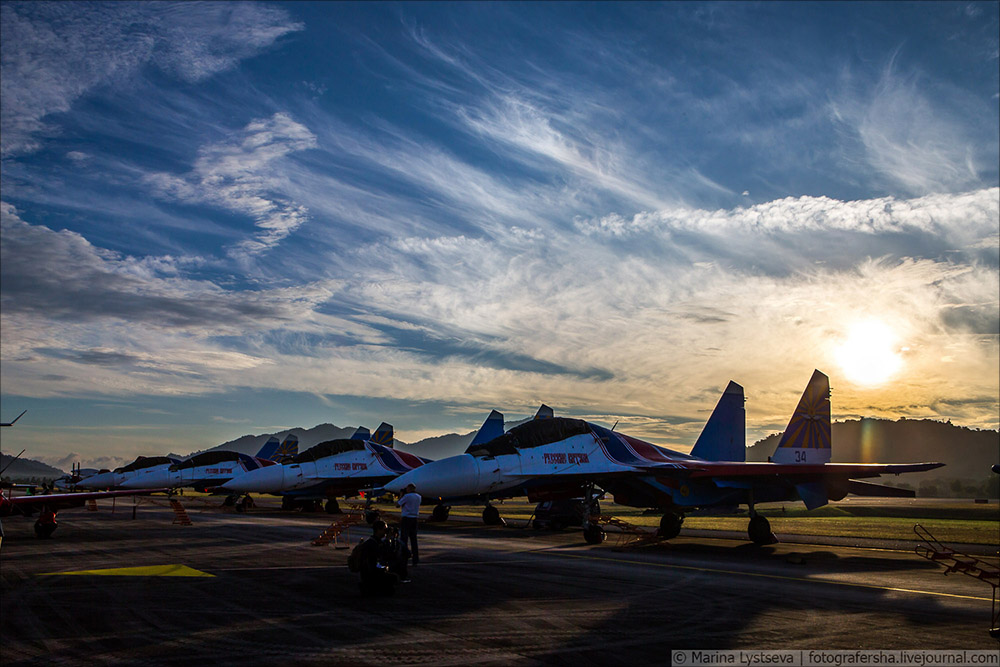

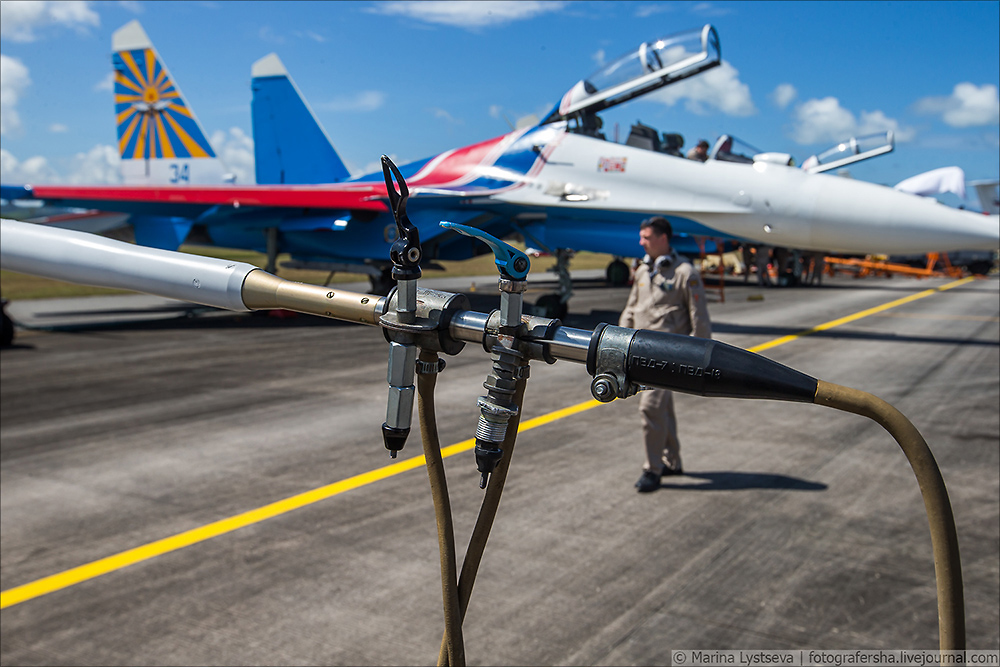
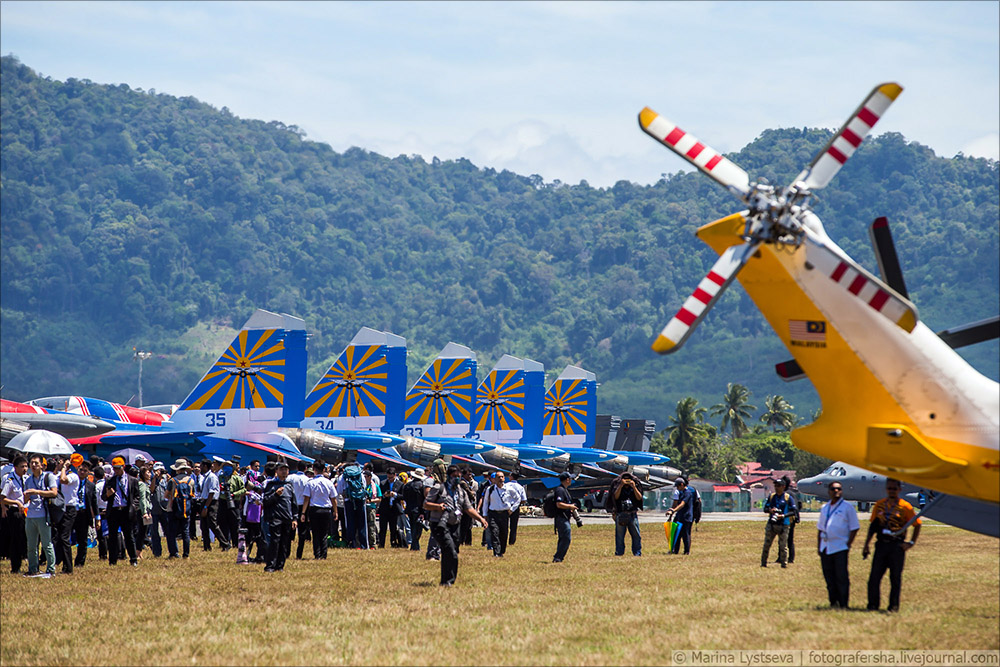

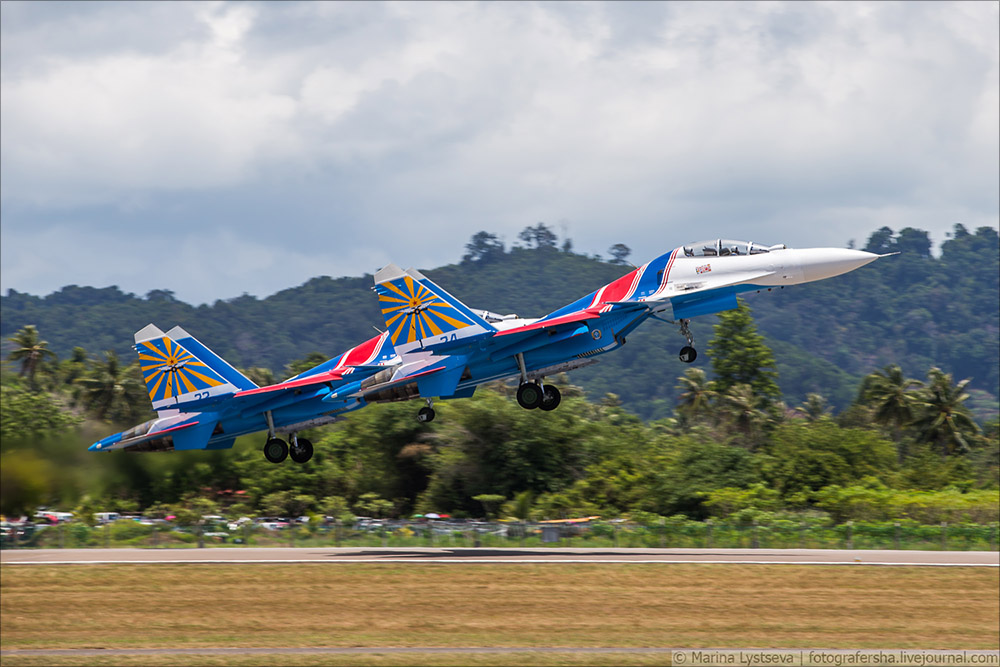

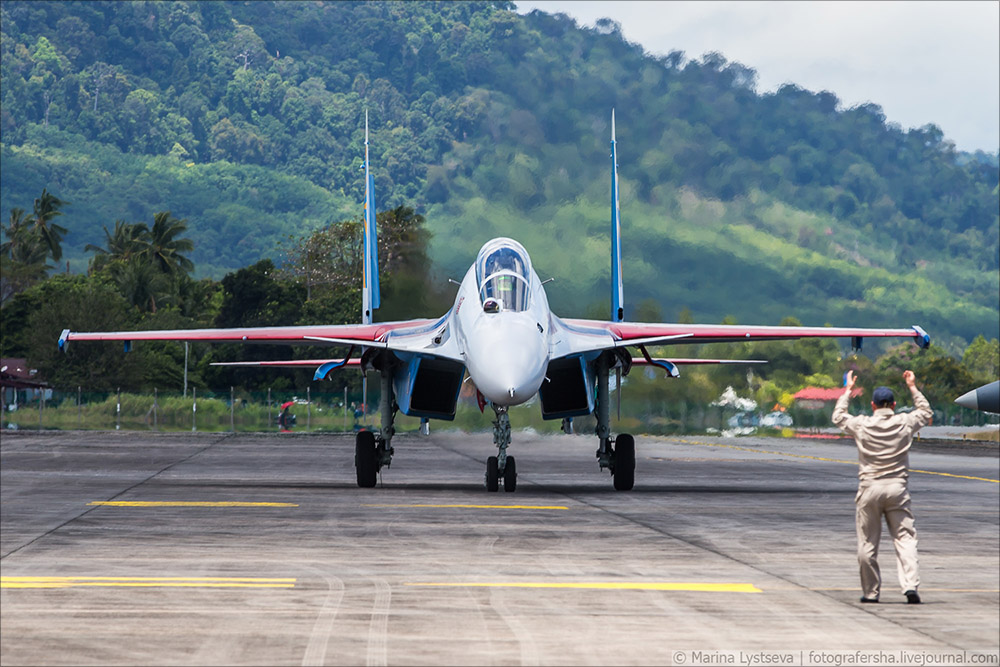
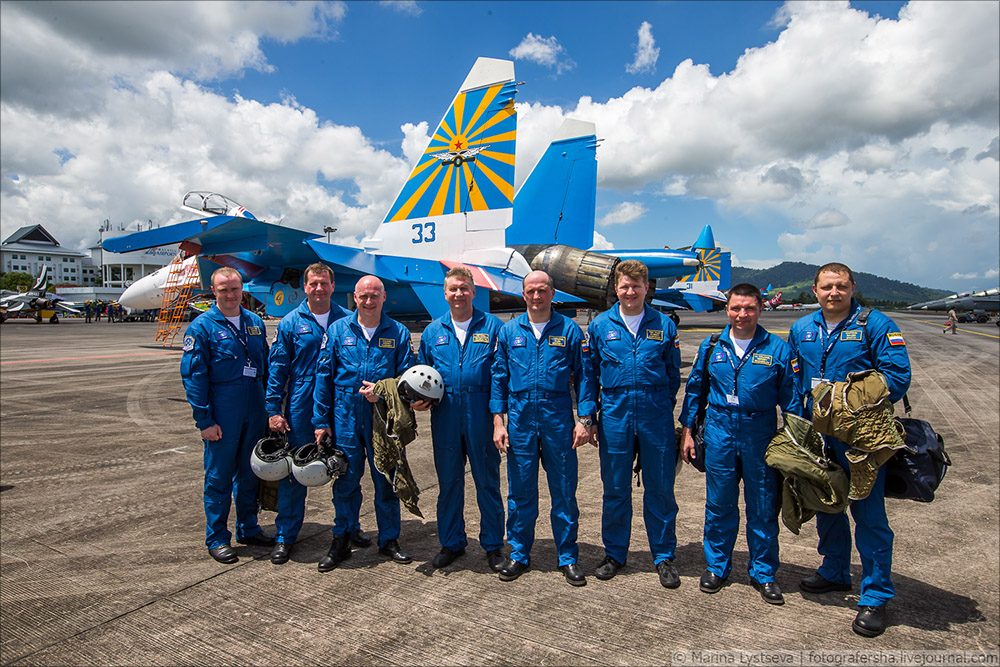
More photos:http://fotografersha.livejournal.com/884548.html










More photos:http://fotografersha.livejournal.com/884548.html
Similar threads
- Replies
- 1
- Views
- 529
- Replies
- 0
- Views
- 765
- Replies
- 0
- Views
- 639
- Article
- Replies
- 0
- Views
- 589




